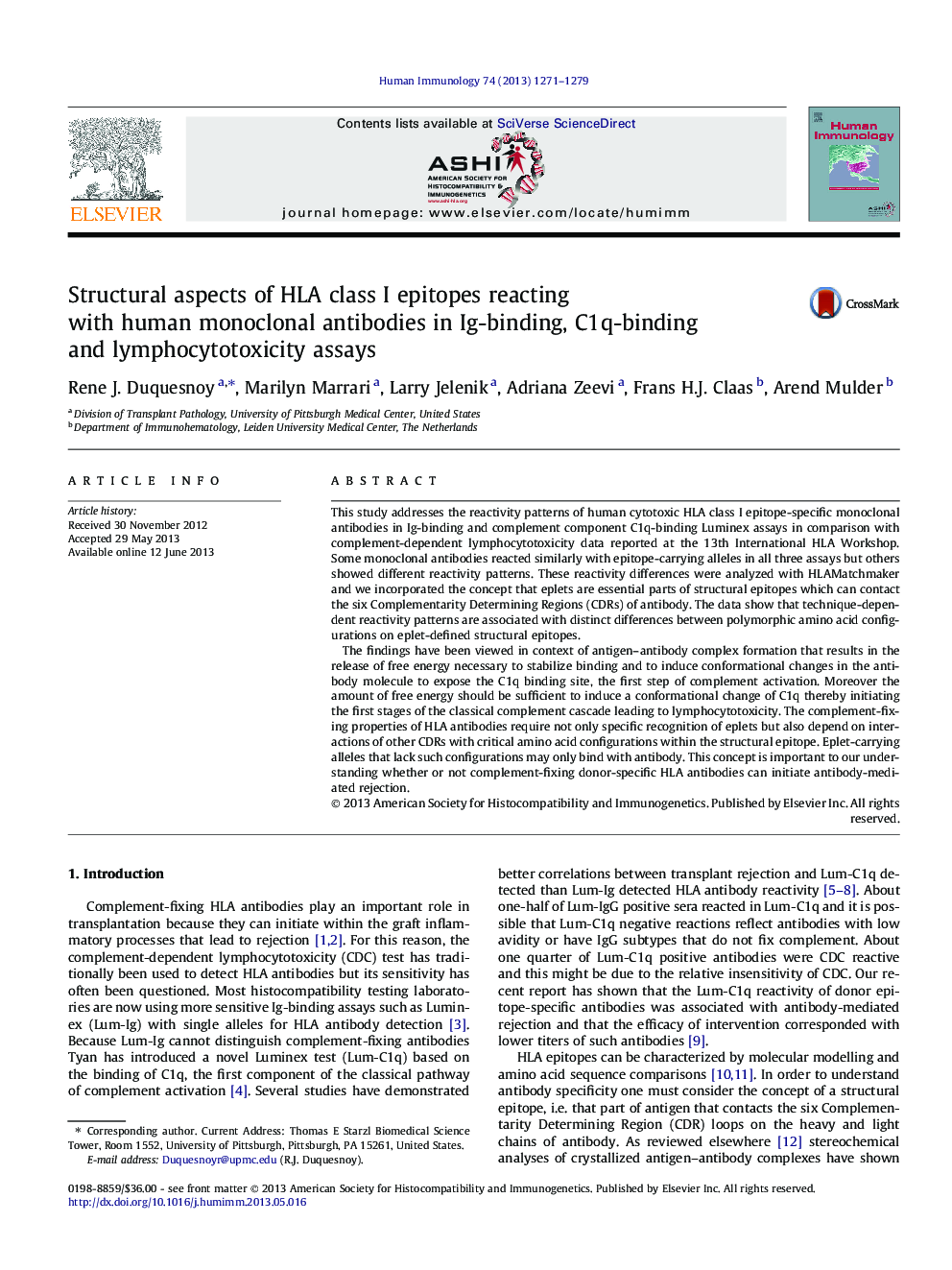| Article ID | Journal | Published Year | Pages | File Type |
|---|---|---|---|---|
| 6116780 | Human Immunology | 2013 | 9 Pages |
Abstract
The findings have been viewed in context of antigen-antibody complex formation that results in the release of free energy necessary to stabilize binding and to induce conformational changes in the antibody molecule to expose the C1q binding site, the first step of complement activation. Moreover the amount of free energy should be sufficient to induce a conformational change of C1q thereby initiating the first stages of the classical complement cascade leading to lymphocytotoxicity. The complement-fixing properties of HLA antibodies require not only specific recognition of eplets but also depend on interactions of other CDRs with critical amino acid configurations within the structural epitope. Eplet-carrying alleles that lack such configurations may only bind with antibody. This concept is important to our understanding whether or not complement-fixing donor-specific HLA antibodies can initiate antibody-mediated rejection.
Related Topics
Life Sciences
Immunology and Microbiology
Immunology
Authors
Rene J. Duquesnoy, Marilyn Marrari, Larry Jelenik, Adriana Zeevi, Frans H.J. Claas, Arend Mulder,
